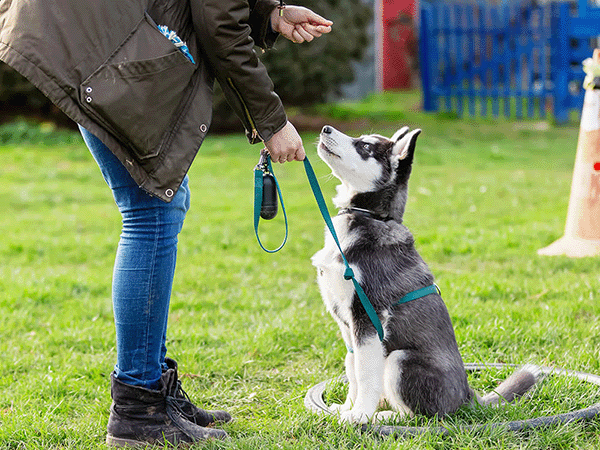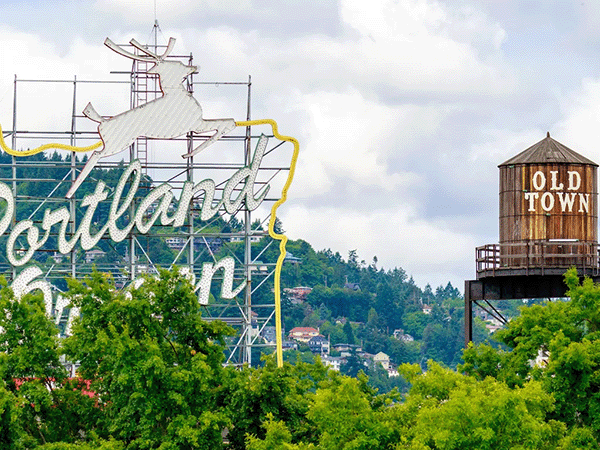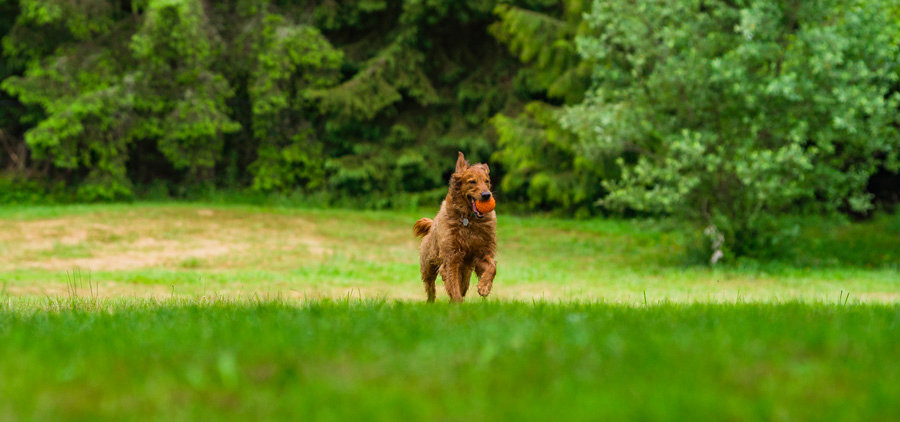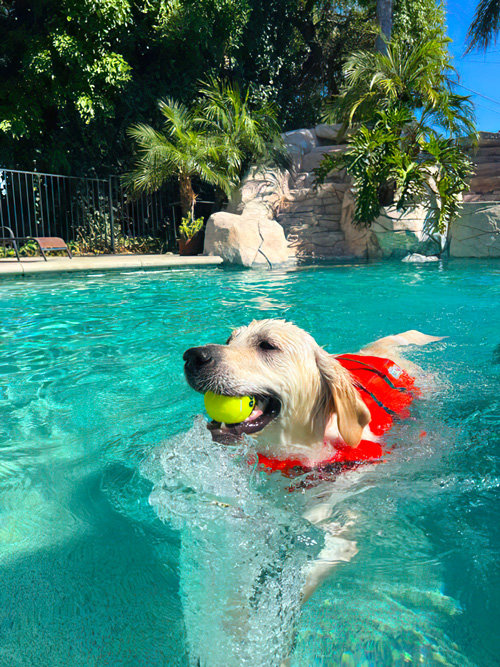Best Toys for Herding Dogs: Keeping Your Pup Happy & Engaged

Herding dogs are amazing, intelligent companions. But that also means they need more than just a simple game of fetch. Finding the right toys for herding dogs is key to keeping them happy and stimulated. This article explores some of the best toys for herding dogs, including options specifically for breeds like Border Collies and Australian Shepherds. We'll help you discover the perfect herding toys for dogs to tap into their natural instincts and keep them entertained for hours.
Sheep dogs and corgis and German shepherds, oh my! Herding dogs are a diverse group of breeds who have been used to work with human handlers to gather, herd, and protect livestock. Regardless of their current occupation of Chief Snooze Officer, dogs bred for herding may display behaviors that reflect the jobs humans originally used them for — with high energy levels to match. Many of these breeds, like the Australian Shepherd, Australian Cattle Dog, and Border Collie, are especially known for their engagement with their people. They form deep bonds with their family members, allowing them to learn impressive tricks and enjoy interactive games.
Energetic breeds like herding dogs benefit from regular mental stimulation and physical exercise.
Understanding Your Herding Dog
Domestic dogs display a set of behaviors related to hunting known as the predatory sequence. You’ll see this reflected in play — and, of course, in their inclination to chase wildlife (something we often call prey drive). If you’ve been told your dog has a high prey drive, you know these behaviors well! As the predatory sequence name implies, the behaviors happen in a designated order.
Humans have bred dogs for thousands of years, and herding behavior is ultimately modified predatory behavior. Bred to accentuate different parts of the predatory sequence, these working dog breeds have different skills. German shepherds and Malinois guard. Border Collies herd with lots of strong eye contact. Blue heelers are known for nipping, which is how they got the nickname “heeler” as they’d go after heels while herding cattle.
Think about toys that help your dog safely express their natural instincts and species-typical behaviors like foraging, sniffing, and licking, as well as breed-typical behaviors, like chasing/herding and biting. Toys for herding dogs are more than just different balls, though plenty of dogs do enjoy chasing, herding, or fetching a ball. What’s most important is setting up opportunities for mental exercise — at a range of difficulty levels — where your herding dogs can get a good physical workout on top of satisfying their innate desires.
Why Herding Breeds Need Specialized Toys
Herding breeds are known for their intelligence and boundless energy. They thrive on having both their minds and bodies engaged. Without enough stimulation, boredom sets in, and that’s when you might start seeing some not-so-fun behaviors like excessive barking, destructive chewing, or even some nipping. Enrichment toys are key to keeping these dogs happy and fulfilled. A great toy will challenge their minds, satisfy their instincts, and tire them out physically. Specifically, toys that mimic the movement of prey tap into a herding dog’s natural desire to chase and control, which can help prevent boredom and those unwanted behaviors. For more ideas on how to keep your herding dog entertained, check out our guide on herding with dogs.
Common Behavioral Challenges in Herding Dogs
While herding dogs are incredibly smart and loyal, they do come with some unique quirks. Because they’re bred to herd, they have a strong instinct to chase and control movement. This can sometimes manifest as nipping at heels or trying to “herd” family members, especially children. You might also notice that classic games like fetch aren’t always a hit. Herding dogs are often more interested in herding the ball than retrieving it! Another common challenge is their tendency towards barking, especially if they aren't getting enough physical and mental exercise. Providing appropriate toys and activities can help redirect their energy and prevent these behaviors from becoming problematic. The right toys can significantly reduce destructive behaviors and keep your herding dog happy and engaged.
Key Takeaways
- Choose toys that tap into herding instincts: Herding breeds thrive with toys that encourage chasing, problem-solving, and instinctual behaviors like herding or retrieving.
- Prioritize both mental and physical enrichment: Don't just focus on physical exercise. Provide puzzle toys, food-dispensing toys, and opportunities for sniffing and licking to keep their minds engaged.
- Train with positive reinforcement and breed-specific activities: Focus on rewarding desired behaviors and incorporate activities like herding or agility training that align with their natural instincts.
Best Toys for Herding Dogs
While it’s imperative to understand your dog’s breed — what we bred their ancestors for, what natural herding instincts they might have — it’s also important you understand that dogs are more than their genetics. Their personalities and interests are as individual as a human’s. Not every herding dog likes a herding ball, and that’s okay!
Consider your own dog’s likes and dislikes when deciding on toys and enrichment activities for them to engage in. Avoid physical or mental activities that frustrate your dog. Look for signs of satisfaction — like an ultimate decrease in destructive behaviors that suggests your dog is getting adequate exercise and fulfillment — as opposed to signs of pent-up energy.
It’s also worth noting that plenty of dogs can benefit from this list based on their likes, not just herding breeds!
Squishy Face Studio Flirt Pole: Exercise and Fun

https://www.squishyfacestudio.com/flirt-pole-v2/
If your dog likes to chase and catch, a flirt pole may be a fun activity for you to engage in together. This long pole with a grippy handle includes a bungee cord with a lure at the end (or sometimes other versions substitute a rope toy) which enables you, the human part of the interactive game, to easily maneuver the lure for your dog to chase and bite.
This design does stand up to some tugging, but chasing and biting — in short bursts, rather than the longer periods of time you might leave your strong chewer with a designated chew toy — is really the name of the game. Unlike balls, flirt poles enable your dog to get some great exercise in a small space. Lure coursing is a sportier option for dogs who love the physical stimulation of running and chasing.
Jolly Egg: A Classic for a Reason

https://jollypets.com/collections/made-in-the-usa/products/jolly-egg-dog-toy
The Jolly Egg is a hard plastic toy that can really stand up to some abuse. It’s perfect for aggressive chewers because the egg-shaped ball makes biting and chomping down difficult, reducing the risk of damaging teeth — or the toy itself.
Your Blue Heeler, Border Collie, or other herding dog can chase, herd, and pounce on this unique ball toy that rolls in an unpredictable pattern (better emulating the experience of herding sheep or herding cattle).
The 20-inch Boomer Ball is another popular option. Need some space to play chase-the-egg? Bring it on out to a Sniffspot!
Jolly Pets Push-n-Play: Engaging Their Instincts

https://jollypets.com/products/push-n-play
A true classic for herding ball fun! The Push-n-Play is the perfect herding ball, durable and great for treibball practice. It is not a rubber ball, which makes it better able to stand up to the wear and tear that your pup’s regular exercise ball might get. It also floats and can be filled with water or sand for a bit of a challenge (if your dog is into that kind of thing).
The Jolly Pets Push-n-Play traditional herding ball is a great choice if your dog enjoys engaging in their natural herding instincts and if you think they’d get frustrated with the more unpredictable roll of the Jolly Egg.
While we’re on the topic of Jolly products: Jolly makes a number of ball toys designed specifically for herding breeds like Blue Heelers, Border Collies, Shetland Sheepdogs, and more They come in a range of sizes (along with an amazing array of products) and include soccer balls, balls with handles, and balls with rope toys attached for flinging and tugging fun. They also make a number of treat-dispensing balls for additional mental stimulation.
CollieBall: Durable and Engaging Herding Ball

The CollieBall is purpose-built for herding breeds, offering both physical and mental engagement. These intelligent, energetic dogs need toys that tap into their instincts. The CollieBall lets them express herding behaviors safely and enjoyably.
Available Sizes and Benefits
The CollieBall comes in three sizes—18”, 22”, and 30”—suitable for a variety of breeds, from a Corgi to a Border Collie. Made from tough materials, it’s designed to handle vigorous play. Unlike regular soccer balls, the CollieBall is safer for paws and noses, lowering the risk of injury during playtime.
The CollieBall's design specifically engages a herding dog’s natural instincts, making it a great choice for owners who want enriching play experiences. You can find more information on herding dog enrichment toys here.
Agility Kits: Taking Playtime to the Next Level
Herding dog breeds, especially Border Collies, often excel at competitive agility. If your energetic herding dog loves to engage in this type of physical activity — fast-paced, full of mental stimulation along with a healthy outlet for the zoomies — FitPaws has a lot of options for building strength and mobility in a small space. The agility kit allows for different configurations.
Bring some treats and have some engaging fun with your pup. If you’re interested in competing, find an agility facility in your area that uses humane, science-based methods for training.
Frisbees: Encouraging Jumping and Retrieval
Frisbees are a classic choice for herding dogs, tapping into their natural instincts for jumping and retrieving. The simple act of chasing and catching a Frisbee provides both physical exercise and mental stimulation, fulfilling those innate needs. A wide-open Sniffspot can be the perfect place to let your dog enjoy a rousing game of frisbee.
Choosing the Right Frisbee
Not all frisbees are created equal. When selecting one for your herding dog, consider the material and durability. Look for options that are soft enough to prevent injury but sturdy enough to withstand vigorous play. Some experts recommend softer frisbees to minimize the risk of dental damage during enthusiastic catches.
Weighted Balls: Adding a Challenge to Herding
Weighted balls can add an extra challenge for herding dogs, encouraging them to engage more deeply with their play. These toys can help improve their strength and coordination while also satisfying their herding instincts. The added weight provides resistance, making the activity more physically demanding and engaging for your dog.
Safety Considerations for Weighted Balls
While weighted balls offer benefits, safety should always be a priority. Ensure the balls you choose are designed specifically for dogs and made from non-toxic, durable materials. Always supervise your dog during play to prevent accidents and ensure they are using the toy appropriately. Experts recommend against weighted balls for puppies or dogs with joint issues.
Jolly Ball with Rope: Combining Tug and Fetch
The Jolly Ball with rope is a fantastic option for herding dogs, as it combines the excitement of tugging with the thrill of fetching. This dual-functionality can keep your dog engaged and active, providing a varied play experience. The rope adds an element of interactive play, allowing for tug-of-war games and other engaging activities.
SodaPup Pop Top Tug Toy: Durable and Rewarding

https://sodapup.com/products/sp-pop-top-rubber-tug-toy-for-interactive-play-orange-squeeze
Does your dog love a game of tug? Try this cute pop-top tug from SodaPup! This toy is durable, but is not meant for chewing. Play together, but provide a different toy, like the SodaPup peanut or other product developed for chewing when it’s time to relax and chew.
Kong Wobbler: A Treat-Dispensing Challenge
The Kong Wobbler weebles and wobbles, but doesn’t fall down. This sturdy, easy to clean food/treat dispensing toy provides some mental stimulation for the opportunistic forager that lives in your home. Since our goal with enrichment is to allow our dogs to engage in behaviors that are innate and typical for their species without frustrating them, the Kong Wobbler is a great intro food dispensing toy.
We know that a treat dispenser like this might not seem to satisfy your dog’s innate herding instincts the way some other toys, like the Jolly herding ball for dogs mentioned above, do — but food enrichment can still be a great part of your pup’s daily routine! It’s especially important to shake things up to keep your dog entertained, so this is an excellent complement to more direct herding activities.
Busy Buddy Kibble Nibble: Slow and Steady Feeding
https://store.petsafe.net/busy-buddy-kibble-nibble
Another great intro food dispensing toy is the Busy Buddy Kibble Nibble ball by Pet Safe. This toy provides mental stimulation and resembles a herding ball, which can help burn excess energy while more clearly satisfying your pup’s strong herding instincts. The hard plastic material is easy to take apart for filling and cleaning. Foraging is a natural instinct for domesticated dogs, but some toys can be frustrating. The Kibble Nibble ball can be adjusted to release food more easily for beginners.
SodaPup Lick Mat: Soothing and Enriching

https://sodapup.com/collections/lick-mats
SodaPup has some of the cutest, most creative enrichment toys on the market, and their enrichment mats (lick mats) are no exception. These flexible rubber mats are designed with ridges to have soft treats like peanut butter, cream cheese, wet food, pumpkin, or any other snack your dog fancies, spread over the surface.
Why are we including so many food enrichment items as a toy for herding breeds? Well, as mentioned above, herding dogs need more than just endless adrenalizing games of fetch with ball launchers and straight up physical exercise!
If your pup has a lot of energy and you think they need more mental exercise, a lick mat is a great, affordable option. Licking and sniffing are calming activities for dogs, with an added benefit of figuring out how to get all of their favorite spreadable treats out of every crevice on the mat. Load up the mat and freeze it once your dog gets good at cleaning it off. This material is durable (and machine washable!), but lick mats are not meant for chewing. With any type of enrichment toy, supervise your dog, especially if it is their first time interacting with the item.
WestPaw Toppl: A Puzzle Treat Toy

https://www.westpaw.com/products/toppl-treat-toy
If you buy one enrichment toy for your dog, regardless of breed, this is possibly the best option for mental stimulation. The WestPaw Toppl is durable, versatile, machine washable, and holds up to some chewing. This toy comes in two sizes, which are designed to be used separately or fit together into one megatoy. Both sizes have a rounded end, which wobbles when used separately. Ridges inside are great for spreading on peanut butter or other soft treats, or can be used to wedge a solid treat inside. Load up one or both ends and freeze it for an extra challenge once your dog is good at emptying the toy. Holes in both sizes allow small food or treats to fall out when they are fit together. This configuration can hold nearly a cup of small kibble, and can be used as a food dispensing toy for meals.
ZippyPaws Burrow Toys: Hide-and-Seek Fun
https://zippypaws.com/product-category/plush-toys/burrow/
ZippyPaws heard your dog liked stuffed toys so they stuffed some stuffed toys inside of a stuffed toy! These toys are super cute and creative. Great for dogs who love to shred and de-squeak stuffed toys, but allow for an added foraging bonus. Tuck some treats inside and let your dog solve this plush puzzle! If your dog is a shredder, save some toilet paper tubes, fold one end in, tuck in some treats, and then fold the other end. Put the treat-filled cardboard tubes inside of the burrow for a fun game.
Nina Ottosson Puzzles: Mental Stimulation

https://outwardhound.com/brands/nina-ottosson/
Let your dog flex some brain muscle with a puzzle toy! If your herding dog is a quick learner who enjoys figuring out a nice puzzle, Nina Ottosson’s are the best. Different levels of difficulty help dogs learn at their own pace and make for happy herding dogs enjoying excellent exercise (mentally, that is).
Benebone Chew Toys: Long-lasting and Satisfying
https://www.benebone.com/
If you’re looking for something for an aggressive chewer, Benebones are a good bet. Chewing is a calming natural instinct that also helps keep your dog’s teeth clean. Many small pet stores carry Benebones if you like to shop local.
Choosing the Right Toys for Your Herding Dog
Enrichment is not one-size-fits-all. Humans have different hobbies, and so do dogs! Help your dog engage with mental, physical, and sensory experiences that they willingly opt into and that are not frustrating. Always remember, when choosing activities for your family pets, that dogs process an astounding amount of information through their sense of smell. Provide enrichment toys or activities (like a visit to a Sniffspot!) with the way your dog experiences the world in mind.
Struggling to find the best exercise balls and other herding toys for your pup? Consider providing a few horse toys on top of the options we talk about in this article! It might sound strange at first, but horse toys are especially well designed to stand up to rough wear — and you can find a great size variety on the larger end if your dog needs more challenging levels of play.
Key Considerations for Toy Selection
Finding the perfect toy means understanding your dog’s unique personality and play style. It’s important to consider your own dog’s likes and dislikes when choosing toys and enrichment activities. While breed can offer some clues, not every herding dog will love a herding ball. The key is to observe your dog and choose toys that bring them joy and satisfaction, not frustration. A toy that's perfect for a Border Collie might be totally different from what an Australian Shepherd prefers.
Don’t limit yourself to toys designed specifically for herding breeds. Plenty of dogs can benefit from toys designed for herders, regardless of their breed. Think about toys that tap into your dog's natural instincts. Does your dog love to chase? A flirt pole or a classic frisbee might be a great fit. Do they enjoy using their nose? Puzzle toys or toys that can be stuffed with treats can provide hours of entertainment. Don't forget about simple pleasures like chewing, sniffing, and licking, which can be just as enriching as high-energy activities.
Safety Tips for Herding Dog Toys
Safety should always be a primary concern when choosing toys. Experts recommend avoiding toys with small parts or sharp edges that could be a choking hazard or cause injury. Consider your dog's size and play style. A toy that's perfect for a small Corgi might not hold up to a German Shepherd’s powerful jaws. If your dog loves to tug, choose a durable toy that can withstand some serious pulling.
Effective Toy Rotation Strategies
Even the most exciting toy can lose its appeal. To keep your dog engaged and prevent boredom, rotate toys regularly. Put some toys away for a week or two, then bring them back out for that “new toy” effect. This can rekindle your dog's interest and prevent them from getting tired of their toys. Supervision is key, especially with new toys. Make sure your dog is playing safely and not destroying the toy in a way that could be harmful.
Variety is important for dogs, too. Offer a range of toys that cater to different play styles and instincts. Combine physical toys like balls and frisbees with mental puzzles and treat-dispensing toys to keep your dog stimulated and entertained. Get creative! You can incorporate training into playtime by using toys as rewards or including them in obedience exercises. A visit to a Sniffspot can also provide a novel environment and new opportunities for play and exploration.
Expert Review
There is so much misinformation out there, we want to make sure we only provide the highest quality information to our community. We have all of our articles reviewed by qualified, positive-only trainers. The trainers that review our content are reviewed by other trainers to ensure that we have the best quality filters on our content.
This is the trainer that reviewed this article:
Kelly Hayden
Owner & Lead Trainer – Ardent Dog – Certified Separation Anxiety Professional Trainer
Training Tips for Herding Dogs
Herding dogs are known for their intelligence, energy, and eagerness to please, which makes them highly trainable. However, their herding instincts can sometimes pose challenges. Understanding these instincts and using positive reinforcement techniques can make training more effective and enjoyable for both of you. Finding the right approach may involve some experimentation, so be patient and adaptable.
Positive Reinforcement Techniques
Positive reinforcement is the most effective way to train any dog, but it's especially important for herding breeds. These dogs thrive on positive interactions with their handlers. Focus on rewarding any steps towards the desired behavior (even if imperfect) rather than using punishment. Treats, praise, or a favorite toy can encourage your dog to engage in desired behaviors and strengthen your bond. This approach builds trust and confidence, creating a positive learning experience.
Fetch Training for Herding Breeds
Herding breeds can be challenging to train for fetch. It's common for them to be more interested in herding than retrieving. They might chase the ball, but instead of bringing it back, they might try to herd it or nudge it with their nose. Understanding this tendency helps tailor your training methods. Instead of forcing a fetch game, consider incorporating herding-like activities that align with their instincts, such as using a herding ball or lure coursing. Teaching a "drop it" command can also encourage retrieval.
Leveraging Playtime for Training
Finding what works best for your dog might require experimenting with different toys and training methods. Engaging your herding dog in playtime that incorporates training reinforces commands while satisfying their need for mental and physical stimulation. Experiment with various toys and activities, like agility training, herding games, or scent work, to discover what motivates your dog. The key is to make training fun and rewarding, leading to better results and a stronger bond. Keep training sessions short and engaging to maintain your dog's focus and enthusiasm.
Related Articles
- Guide to Herding With Dogs | Herding Behavior in Dogs
- Best Toys for Herding Dogs - Border Collies, Cattle Dogs, Shepherds
- How to Train a Herding Dog Breed | Sniffspot
- Top-Rated Dog Trainers for Herding training in the US | Sniffspot
- German Shepherd Dog Aggression Causes, Myths, and Training
Frequently Asked Questions
Why does my herding dog nip at heels and try to herd family members?
This behavior stems from their ingrained herding instincts. They're wired to control movement, and sometimes that translates to trying to "round up" their human family. Providing outlets for these instincts, like herding balls or flirt poles, can help redirect this behavior in a positive way. Training can also help teach them appropriate interactions.
My herding dog isn't interested in fetch. What games will they enjoy?
Traditional fetch might not be stimulating enough for a herding dog. They often prefer activities that involve chasing and controlling movement. Think flirt poles, herding balls, treibball, or even agility training. These games tap into their natural instincts and provide a more satisfying outlet for their energy.
What kind of toys are best for a herding dog who loves to chew?
Durable chew toys are essential for any dog who loves to gnaw, but especially for herding breeds with strong jaws. Look for tough, non-toxic materials like those used in Benebones or Jolly Eggs. Remember, even durable toys should be supervised, and any toy showing signs of damage should be replaced.
How can I use toys to help train my herding dog?
Toys can be powerful motivators in training. Use them as rewards for good behavior or incorporate them into obedience exercises. For example, you can use a flirt pole to teach commands like "come" or "stay," making training more engaging and fun for your dog.
Are herding balls good for all herding dogs?
While herding balls can be a great outlet for herding instincts, not every herding dog will automatically love them. It's important to consider your individual dog's preferences. Some dogs might find them stimulating, while others might be indifferent or even frustrated. Observe your dog's reaction and adjust your approach accordingly. A variety of toys and activities is always a good idea.
Most recent articles
Related articles
Top dog guides per area
Dog training guides

Dog Food Aggression: Why You Shouldn't Punish It
Does your dog ever growl when you walk by their food dish? Maybe they get possessive of treats, carrying them far away and giving you side-eye when you start to approach — or snarling at your other pets or children if they get too close.

Best Dog Fields in the US: 25+ Wide-Open Spaces for Your Pup to Run Free
The best dog fields in the US offer something that traditional enclosed parks simply can't match: acres of open space where your pup can truly stretch their legs and run at full speed. From Colorado's 470-acre prairie meadows to Tennessee's award-winning "Outback," these wide-open spaces allow dogs to roam, explore, and exercise naturally while engaging instincts that cramped urban parks suppress.

The Ultimate Guide to Scent Training for Dogs
Your dog's nose is an amazing tool. Did you know they have 40 times the olfactory receptors than humans? Scent training for dogs taps into this superpower, turning everyday moments into exciting sniff-fests. It's enriching for all types of dogs – reactive, shy, or simply adventurous. Ready to explore the world of scent work for dogs? Let's get started.

Service Dog Training Costs: DIY vs. Pro
More than 80 million Americans rely on their service dogs to help them navigate the world. Task-trained assistance animals perform a huge range of life-changing—in many cases, life-saving—services: These dogs act as eyes for visually impaired handlers, provide mobility support, alert to seizures and blood sugar crashes, interrupt anxiety attacks, remind their people to take medications, and so much more.

How to Deal With Puppy Potty Training Regression
You thought those dreaded middle-of-the-night potty breaks were over. You were finally free from cleaning up puppy puddles. Then, suddenly, your furry friend starts having accidents again. It's frustrating, right? This puppy potty training regression is more common than you think. Don't worry; we'll help you get your pup back on track. We'll cover the common causes, offer practical solutions, and give you actionable steps to tackle this challenge together.

Dirty Dog Syndrome: Causes, Solutions, and Prevention
It's a cringe-worthy moment every dog owner dreads: your furry friend chowing down on something truly disgusting. If your dog has a penchant for poop, you're dealing with coprophagia. It's more common than you think, and thankfully, often manageable. This article explores the reasons behind dirty dog syndrome, from instinct to learned behavior. We'll also give you practical tips to help break this unpleasant habit.

How to Train Your Rescue Dog: A Complete Guide
* All Sniffspot articles are reviewed by certified trainers for quality, please see bottom of article for details *
Dog enrichment guides

Best Dog Water Parks in the US: 15+ Amazing Splash Destinations for Your Pup
Do you have a water-loving dog looking to burn some energy? There are countless dog parks to visit throughout our country — but some of them become far too hot in the midday sun to be safe for your pets to play. That’s why we’ve put together a list of some of the best dog water parks throughout the United States! At these locations, your pup can frolic, splash, and swim to their heart’s content.

Best Dog Fields in the US: 25+ Wide-Open Spaces for Your Pup to Run Free
The best dog fields in the US offer something that traditional enclosed parks simply can't match: acres of open space where your pup can truly stretch their legs and run at full speed. From Colorado's 470-acre prairie meadows to Tennessee's award-winning "Outback," these wide-open spaces allow dogs to roam, explore, and exercise naturally while engaging instincts that cramped urban parks suppress.

Best Toys for Herding Dogs: Keeping Your Pup Happy & Engaged
Herding dogs are amazing, intelligent companions. But that also means they need more than just a simple game of fetch. Finding the right toys for herding dogs is key to keeping them happy and stimulated. This article explores some of the best toys for herding dogs, including options specifically for breeds like Border Collies and Australian Shepherds. We'll help you discover the perfect herding toys for dogs to tap into their natural instincts and keep them entertained for hours.

Tough Dog Toys for Aggressive Chewers: A Practical Guide
Does your dog destroy every toy you give them? Is your house littered with the remnants of plush toys? Are you tired of wasting money on "indestructible" dog toys for aggressive chewers that don't last? Then this post is for you. We'll cover everything you need to know about finding the best dog toys for aggressive chewers, so you can finally give your pup something safe, durable, and fun.

Daily Exercise Calculator: How Much Exercise Does Your Dog Need?
Everyone knows dogs need exercise, but how much is enough? Walks are great, but creating a truly balanced fitness plan means understanding your dog's specific needs. This post helps you develop a daily exercise calculator for your dog, considering breed, age, and lifestyle. We'll cover fun activities, understanding exercise intensity, and recognizing when your pup has had enough. Let's create a plan that keeps your dog happy and healthy!

Complete Guide To Herding With Dogs
* All Sniffspot articles are reviewed by certified trainers for quality, please see bottom of article for details *

Dog Enrichment Activities: The Ultimate Guide
Ever feel like your dog is restless or bored? They may be getting enough exercise, but still need more. That's where enrichment activities for dogs come in. Giving your dog opportunities to sniff, explore, and problem-solve can make a world of difference. Whether you have a puppy, adult, or senior dog, enriching their environment is key for their well-being. Let's explore how to add cognitive enrichment for dogs, even tailoring activities to your dog's breed with breed specific enrichment and fun enrichment games for dogs.
Dog reactivity guides

Rottweiler Aggression: Truth vs. Myth
Many dogs have gotten a bad reputation over the years for being "dangerous breeds." Rottweilers are among them. Like pit bulls and other large, blocky-headed types of dogs, these powerful and beautiful animals are often assumed to be aggressive.

Best Dog Fields in the US: 25+ Wide-Open Spaces for Your Pup to Run Free
The best dog fields in the US offer something that traditional enclosed parks simply can't match: acres of open space where your pup can truly stretch their legs and run at full speed. From Colorado's 470-acre prairie meadows to Tennessee's award-winning "Outback," these wide-open spaces allow dogs to roam, explore, and exercise naturally while engaging instincts that cramped urban parks suppress.

What Is a Reactive Dog? A Practical Guide for Owners
Does your dog suddenly transform into a barking, lunging Tasmanian devil on walks? It's stressful for both of you. If this sounds familiar, you might have a reactive dog. Understanding what is a reactive dog is the first step to calmer walks. We'll explore the common triggers and give you actionable strategies to manage and modify this behavior. Let's turn those stressful walks into enjoyable outings.

How to Socialize a Reactive Dog: A Step-by-Step Guide
Does your dog display reactivity to other pets or people? Maybe they’re a new rescue pup and are still settling into your home. Or they were sick growing up, so you missed their critical socialization period. Possibly they’ve had a bad experience after being raised as a normal puppy.

What Is a Reactive Dog? A Complete Guide
Is your dog overly excited or fearful around other dogs? Do they bark, lunge, or whine? You might have a reactive dog. Many dog owners face this challenge. Understanding what a reactive dog is is the first step to helping them. This guide explores the common causes of dog reactivity, explains what makes a dog reactive, and offers practical tips and resources. Let's work together to build a stronger bond with your dog and enjoy stress-free walks.

9 Best Online Communities for Reactive Dog Parents
Does your dog's reactivity make walks stressful? You're not alone. Many dog owners face similar challenges. This guide offers practical advice and support for managing reactivity, including finding the best online dog training for reactive dogs. We'll connect you with reactive dog support groups, share training tips, and explore resources like the best dog training app for reactive dogs. Let's build a stronger bond with your dog, together.
* All Sniffspot articles are reviewed by certified trainers for quality, please see bottom of article for details *
How To Groom a Reactive Dog
* All Sniffspot articles are reviewed by certified trainers for quality, please see bottom of article for details *
Sniffspot community guides

The State of Public Dog Parks Across the United States
From 2009 to 2020, there was a 40 percent increase in the development of public dog parks. Designated spots for canine exercise have become commonplace in every major city in North America — many pet owners won’t even consider renting an apartment that doesn’t have its own fenced-in pet area for their canine companions.

Best Dog Fields in the US: 25+ Wide-Open Spaces for Your Pup to Run Free
The best dog fields in the US offer something that traditional enclosed parks simply can't match: acres of open space where your pup can truly stretch their legs and run at full speed. From Colorado's 470-acre prairie meadows to Tennessee's award-winning "Outback," these wide-open spaces allow dogs to roam, explore, and exercise naturally while engaging instincts that cramped urban parks suppress.

How This Family is Affording Their Dream Property Through Renting it Hourly to Dogs
Thousand Oaks, California has been a safe haven for Sniffspot host, Jen, since childhood. Having grown up in busy Santa Barbara, Jen, an introvert from an early age, would seek out solitude and serenity away from tourists attractions and droves of people visiting from elsewhere. “My grandparents own 60 acres about a 30 minute drive from here, and I grew up spending every summer and every holiday visiting them on the ranch,” Jen explained. “In Santa Barbara, we wouldn't go to the beach on the weekend because that's where everybody was, so you'd find places off the beaten path where the tourists weren't. For me, the ranch was just my happy place.”

Host Tips: Ellen K. What Makes Sniffspot Successful for Me
Ellen is the host of Country Pasture Getaway, one of Sniffspot's most popular sniff spots. She has taken the time to write up the lessons she has learned about how to be a great sniff spot host.

How this Oregon Farmer is Making a Business From Renting Her Land to Dogs
Just 20 minutes outside of the busy city of Portland, Oregon, and settled right on the banks of the Columbia River, you’ll find what countless visitors have flocked to the area in search of – mountain views, crisp, clean air, and running water for miles. What you might not expect to find, however, is a hidden oasis designed just for dogs and their people, owned and operated by a farming couple and enjoyed by visitors on two legs, and four.

Host Tips: Fran T. Providing Great Guest Service at our Spot
Fran is the host of Ranch Setting, one of Sniffspot's most popular spots. She has taken the time to write up the lessons she has learned about how to be a great Sniffspot host.

How Sniffspot Helped a Nervous Rescue Work Through His Fears and Change His Family’s Life
This is the story of a family and dog rescuing each other.
Top dog trainers in the US

The Best Dog Trainers in the United States of 2025
This is a list of the top dog trainers in the United States, based on votes from the Sniffspot community and the general public.
The Best Dog Trainers in Seattle, WA of 2025
This is a list of the top dog trainers in Seattle, WA, based on votes from the Sniffspot community and the general public.
The Best Dog Trainers in Portland, OR of 2025
This is a list of the top dog trainers in Portland, OR, based on votes from the Sniffspot community and the general public.
The Best Dog Trainers in Los Angeles, CA of 2025
This is a list of the top dog trainers in Los Angeles, CA, based on votes from the Sniffspot community and the general public.
The Best Dog Trainers in New York, NY of 2025
This is a list of the top dog trainers in New York, NY, based on votes from the Sniffspot community and the general public.
City dog parks guides

Top 10 Indoor Dog Parks: A US Guide
Looking for a space to play with your dog no matter what the weather’s like outside? Look no further than our list of the best indoor dog parks in the United States! These climate-controlled spaces are growing in popularity as pet ownership increases throughout the country. As a bonus, many of them also offer dog training, boarding, grooming, or daycare services on the premises.

Best Dog Fields in the US: 25+ Wide-Open Spaces for Your Pup to Run Free
The best dog fields in the US offer something that traditional enclosed parks simply can't match: acres of open space where your pup can truly stretch their legs and run at full speed. From Colorado's 470-acre prairie meadows to Tennessee's award-winning "Outback," these wide-open spaces allow dogs to roam, explore, and exercise naturally while engaging instincts that cramped urban parks suppress.

Best Dog Parks in the US: Ultimate Guide to Public & Private Off-Leash Adventures
Is your pup giving you those pleading "let me run free" eyes? Whether you're a new dog parent or a seasoned pro looking for fresh adventures, finding the perfect off-leash paradise for your furry friend can feel ruff! From sun-soaked California beaches where your water-loving lab can make a splash to mountain trails in Vermont where your adventure buddy can chase every scent, we've sniffed out the 15 best dog parks across America.

Dog Parks Near Me: Las Vegas Edition
Looking for the perfect dog park near me in Las Vegas? You're in luck! This guide explores all the best options for your pup, from public dog parks to private dog parks near me on Sniffspot. We'll help you find the ideal spot for playtime, socializing, and fresh air. Plus, we'll cover essential etiquette and safety tips to ensure a happy visit for everyone. Get ready for some tail-wagging fun!

Top Sniffspot Locations: Find the Perfect Dog Park
Looking for the perfect dog park? Whether you need a wide-open public space or a private, fenced-in spot, this guide will help you find the best dog parks across the US. We'll cover top-rated public parks, the perks of private dog parks, and even explore Sniffspot locations – giving your pup a safe and fun place to play. Ready to find your dog's new favorite spot? Let's go!

Sniffspot: Portland's Best Private Dog Parks
Ready to discover Portland's best dog parks? Whether you're looking for a public park or the unique experience of a private Sniffspot, this guide has you covered. We'll help you find the perfect spot for your pup, with tips on what to bring, how to prepare, and even understanding dog body language. Plus, we'll explore some top Portland dog parks, including public and Sniffspot options, so you can plan your next dog-friendly adventure in the City of Roses.
Portland Dog Parks: Public & Private Options
This page is about public city dog parks and also includes Sniffspot private dog parks. Sniffspot is the largest network of private dog parks for rent in the world!
Small Dog Park Guide: Tips for Finding the Perfect Spot
Finding the perfect dog park for your small breed can be ruff! Big dog parks can be overwhelming, even dangerous, for little pups. This comprehensive guide helps you sniff out the best small dog parks for your pint-sized companion, covering everything from essential safety checklists to top recommendations for small dog parks across the US—including both public spots and private dog parks.
Dogs breeds

German Shepherd Dogs: Insights From Real Dog Owners
The German Shepherd Dog (GSDs) are known for their intelligence, loyalty, and striking appearance. They're also incredibly versatile, excelling as working dogs and devoted family companions. This guide covers everything you need to know about GSDs, from understanding their unique traits and rich history to practical advice on training and care. So, whether you're a seasoned GSD owner or just starting your research, let's explore this remarkable breed together.

Best Dog Fields in the US: 25+ Wide-Open Spaces for Your Pup to Run Free
The best dog fields in the US offer something that traditional enclosed parks simply can't match: acres of open space where your pup can truly stretch their legs and run at full speed. From Colorado's 470-acre prairie meadows to Tennessee's award-winning "Outback," these wide-open spaces allow dogs to roam, explore, and exercise naturally while engaging instincts that cramped urban parks suppress.

Labrador Retriever: Ultimate Guide by Owners
Discover the Labrador Retriever, a breed celebrated for its playful nature, affectionate temperament, and trainability. Labradors are known for their friendly demeanor and adaptability, making them perfect family companions and versatile working dogs. As one of the most popular types of retrievers, Labs are ideal companions for various lifestyles and are recognized by the American Kennel Club (AKC) as an excellent breed for families.

Golden Retriever Advice: The Complete Owner's Guide
Golden Retrievers: they're gorgeous, playful, and incredibly popular. But before you welcome one into your home, you need the right golden retriever advice. This guide draws on the wisdom of nearly 10,000 Golden Retriever owners, offering practical tips for caring for these affectionate dogs. From understanding their high energy levels to mastering grooming and training, we'll cover everything you need to know. So whether you're already a devoted Golden parent or just starting your research, get ready to learn how to give your furry friend the best possible care.

American Staffordshire Terrier: Your Complete Guide
Think American Staffordshire Terriers are tough? Think again. While their muscular build might intimidate some, these dogs are known for their playful and loyal personalities. This guide draws on the experience of nearly 10,000 AmStaff owners to reveal the truth about this often misunderstood breed. Want to learn more about caring for an American Staffordshire Terrier? You're in the right place.

Australian Shepherd Facts: Breed Info & Care Guide
Discover the Australian Shepherd, an AKC breed celebrated for its trainable, playful, and affectionate nature. Despite its name, the Australian Shepherd is actually a native breed to the United States, originally developed to breed on farms and ranches. Considered a medium dog, Australian Shepherds were bred for herding beginning in the 1950s. As one of the high-energy breeds, Aussies are known for their boundless energy and need for regular exercise, including aerobic exercise.

Essential Husky Facts for Owners: Breed Guide
Discover the Siberian Husky, a breed celebrated for its curious, intelligent, and loyal nature. Considered a medium-sized dog, Siberian Huskies were originally bred in Russia for sledding, beginning in the early 20th Century. Today, they're one of the most popular active breeds in North America.





























